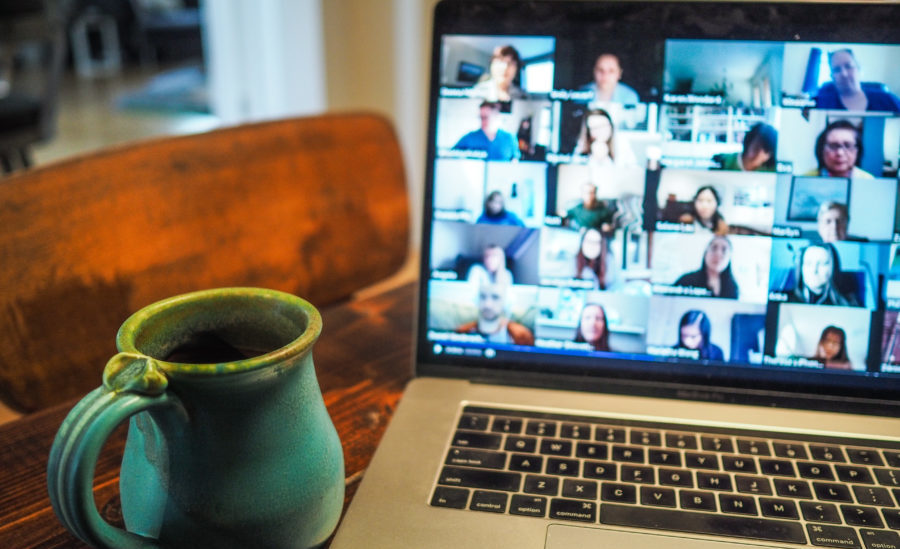Let’s face it, without creativity and ingenuity mankind would never have have advanced
Novel ideas come about more easily in person
The following written content from Katie Hunt

Collaboration has been behind some of humanity’s greatest achievements — the Beatles’ biggest hits, putting a man on the moon, the smartphone. Do Zoom and other forms of video interaction crush the creative process that led to such feats? Yes, according to new research published Wednesday that found it’s easier to come up with creative ideas in person.

It’s an answer many employers have been searching for over the past two years, as working from home has become the norm during Covid-19 pandemic. The National Bureau of Economic Research in the United States said last year that 20% of workdays will be from home when the pandemic ends, compared with just 5% before.
“We initially started the project (in 2016) because we heard from managers and executives that innovation was one of the biggest challenges with video interaction. And I’ll admit, I was initially skeptical,” said Melanie Brucks, an assistant professor of business marketing at Columbia Business School and author of the study that published in the scientific journal Nature.
Brucks said she previously believed virtual interaction mimics an in-person experience “pretty well” and assumed that videoconferencing naysayers were Luddites. She spent four years exploring whether it really had any impact on people’s ability to generate innovative ideas.
Generating ideas
She recruited 602 people, including university students and staff, and divided them into pairs to work on tasks either in person or virtually. The tasks involved coming up with new uses for everyday things, such as bubble wrap and a Frisbee, and each room had the same five items. “When we innovate, we have to depart from existing solutions and come up with new ideas by drawing broadly from our knowledge. Coming up with alternative ways to use known objects requires the same psychological process,” she explained.
The performance of each pair was determined by how many ideas they came up with and the novelty and value of their ideas as ranked by student judges. (For example: a creative use for a Frisbee: knock fruit out of tree, deliver a message. Less creative: a picnic plate or hat.)
Researchers also used eye-tracking software, which found that virtual participants spent more time looking directly at their partner, as opposed to gazing around the room. What’s more, she said pairs who were videoconferencing remembered less of their surroundings, which were identical to those who were meeting in person.
“This visual focus on the screen narrows cognition. In other words, people are more focused when interacting on video, which hurts the broad, expansive idea generation process,” Brucks said.Jay Olson, a postdoctoral scholar at McGill University in Canada who studies ways to measure creativity, said that people often look to their surroundings to help them generate ideas.
“Objects in the room can prompt new associations easier than trying to generate them all internally,” said Olson, who wasn’t involved in the research. “The authors find that interacting through a computer screen could unintentionally shift attention in a way that reduces the generation of these novel ideas.”
Real-world findings
The findings were replicated in a similar but larger experiment outside the lab. Some 1,490 engineers working in five different countries (in Europe, the Middle East and South Asia) for a telecommunications infrastructure company were randomly paired, either face-to-face or via video call. They were asked to create product ideas and choose one to submit as a new product for the company.
Bruck said the findings were similar, even though the exercise was more complex than the lab-based test, the engineers knew one another beforehand, and they were regular users of videoconferencing software.
“The field study shows that the negative effects of video conferencing on idea generation is not limited to simplistic tasks and can play out in more complicated and high-tech brainstorming sessions as well,” she said.
“The fact that we replicate the negative effect of videoconferencing on idea generation in our field setting suggests that the negative effect of video conferencing will likely not weaken as people become more familiar with software such as Zoom or get more experience generating ideas and working together with their teams.
“But there were some important caveats. The study found that video conferencing didn’t hinder all collaborative work. While generating ideas was easier in person, it didn’t make a difference in the ability to critically evaluate creative ideas, such as selecting the best idea out of the set, Bruck said.
Creativity and zoom aren’t incompatible
Ellen Langer, a professor of psychology at Harvard University and author of “On Becoming an Artist: Reinventing Yourself Through Mindful Creativity” said the new research was an important first step. However, she said it was a mistake to conclude that creativity and videoconferencing are incompatible.
Whether or not we’re creative while over Zoom may depend on how creative we are in the first place and the task at hand, said Langer, who wasn’t involved in the research. Generating uses for a Frisbee and generating novel ways of dealing with conflict aren’t the same — one task may be better done alone, outside of any sort of meeting.
“Perhaps many of us make friends faster in person than over Zoom, and creativity flourishes when we’re relaxed. But when Zooming from home, people are probably more relaxed than when in an experiment,” she added.Olson and Langer both suggested there is a practical solution to the conundrum that could be tested in future research: If people are asked to spend more time looking around the room during their virtual sessions, would they generate as many ideas as they do during in-person sessions?
Olson said managers shouldn’t rush to get people back in the office or add more face-to-face meetings as a result of this research, although it might make sense to hold brainstorming sessions in person. Read more from CableNews





